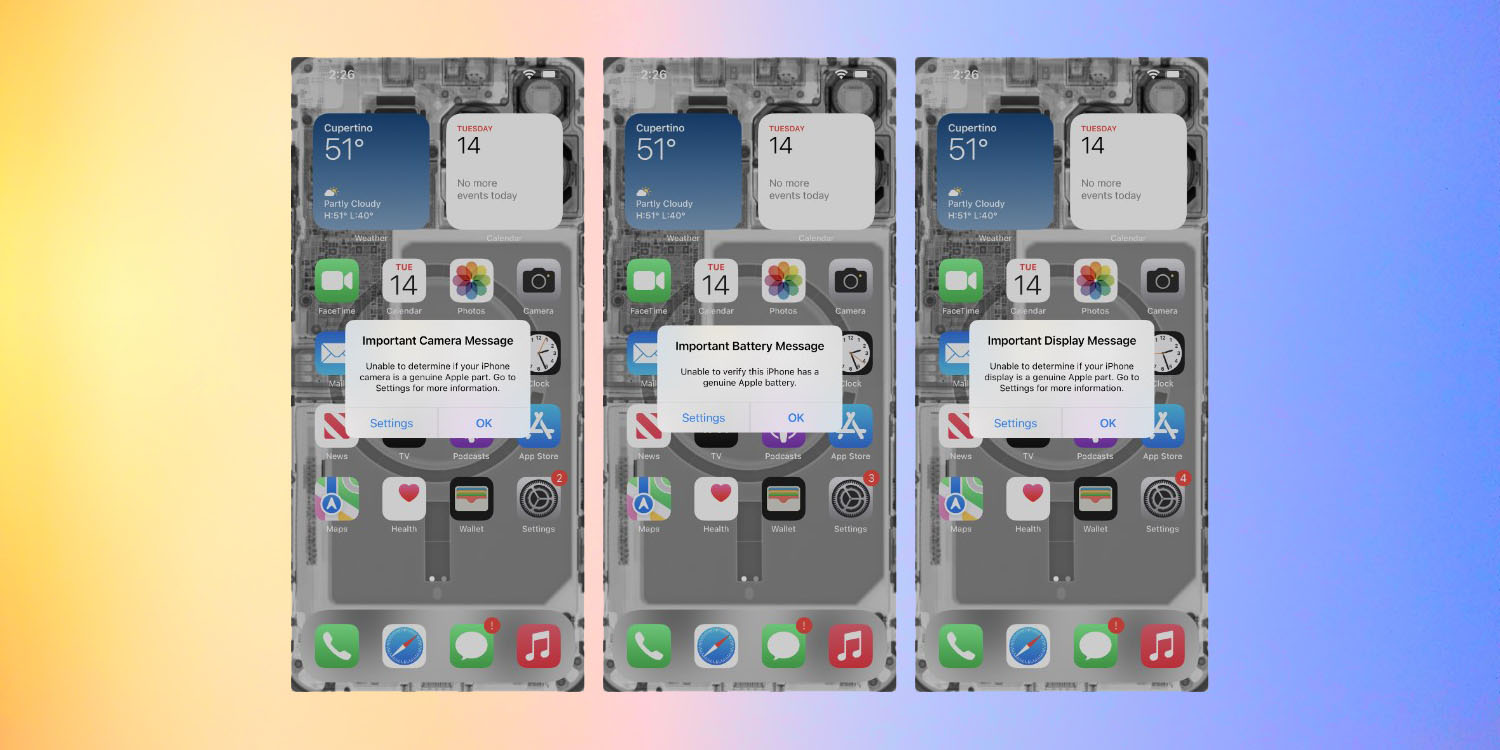
The iPhone 14 iFixit repairability rating has been dramatically reduced, after the company listened to feedback from consumers and independent repair shops, and admitted that it didn’t take into account the huge barrier imposed by Apple’s parts pairing process.
The phone’s repairability rating has now been reduced from 7/10 to 4/10, which moves the product from “recommended” to “not recommended” …
The original iPhone 14 iFixit repairability rating
The original iPhone 14 iFixit repairability rating was a relatively high 7/10, with the company celebrating the fact that the phone opened from both the front and the back – a design change that made a huge difference to the ease of carrying out repairs.
Apple didn’t mention the secret redesign in their keynote. If reviewers had disassembled the phone, they would have discovered this: The iPhone 14 opens from the front and the back.
In other words, Apple has gone back to the drawing board and reworked the iPhone’s internals to make repair easier.
Previous iPhones either opened from the front only, which made screen repairs easy, but other repairs hard, or the back only, which made screen repairs much tougher.
The problem of parts pairing
As of the iPhone 12, Apple introduced a practice known as parts pairing, or serialization. This is where the serial number of a component (like a screen) is digitally paired to the serial number of the iPhone itself. Even if you swap one genuine Apple component for another, the repair won’t fully work because the pairing won’t match.
With the iPhone 13, for example, a screen-swap would cause Face ID to stop working.
iFixit’s rethink
iFixit didn’t initially ding Apple for parts pairing, because if you buy a replacement part direct from Apple, and tell the company the serial number of your phone, they will reset the pairing so that it works.
However, consumers and independent repair shops pointed out that a common way to achieve affordable repairs is to harvest parts from broken iPhones. If you do this, you have to hope that Apple will agree to reset the pairing in a chat, or the repaired device may not work properly. Or even if it does, it will display annoying messages (photo, above).
iFixit says it has now accepted that this should have resulted in a much lower rating, and has downgraded the repairability from 7/10 to 4/10.
Most major repairs on modern iPhones require Apple approval. You have to buy parts through their system, then have the repair validated via a chat system. Otherwise, you’ll run into limited or missing functionality, with a side of annoying warnings.
Lots of independent repair shops have business models that are threatened by Apple’s parts pairing practice. Shops harvest parts from broken devices. They use third-party parts. They shouldn’t have to send Apple their customers’ personal information, or agree to five years of audits just to do the repairs they know how to do […]
So we’ve gone back to the drawing board with our scoring system to make sure that it reflects this significant new software limitation on repairs. And now that we’ve run the iPhone 14 through our new scorecard, the picture isn’t as rosy. The iPhone 14’s new 4 / 10 score reflects the fact that individuals and independent repair shops encounter some atrocious limitations when trying to fix it.
The company will of course be carrying out its usual teardowns on the iPhone 15 lineup, and we can presumably expect similarly low ratings for the same reason.
FTC: We use income earning auto affiliate links. More.






Comments